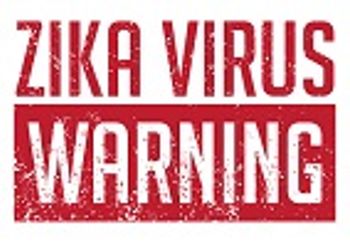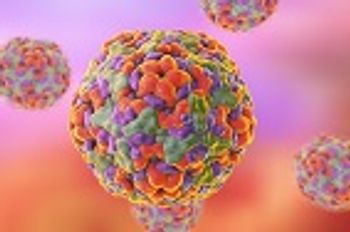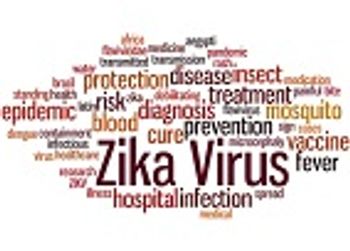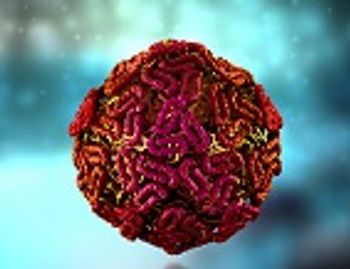
In HIV controllers, both T follicular helper (TFH) and non-TFH lymph node CD4 T cells contain HIV.

In HIV controllers, both T follicular helper (TFH) and non-TFH lymph node CD4 T cells contain HIV.

Researchers have made an important breakthrough in efforts to develop a test to help clinicians determine whether a patient has a microbial infection or sterile trauma, a new study shows.

The four previously reported non–travel-related cases of Zika infection have now been confirmed to be locally acquired in Miami-Dade county, Florida.

A new study conducted by Andreas Peschel, PhD, and colleagues at the University of Tuebingen in Germany, has shown that lugdunin, a bacteria naturally produced by the human body, can be used as an antibiotic that can eliminate Methicillin-Resistant Staphylococcus aureus (MRSA).

An international team of researchers has identified a potential role for certain monoclonal antibodies in developing a treatment for Zika virus.

In response to the growing outbreak, and the escalating need for a vaccine that can be used in infants, those who are immunocompromised, and other populations in whom currently available vaccines are not to be administered, the NIAID has entered a vaccine manufactured by Bavarian Nordic into Phase I trials.

World Hepatitis Day aims to increase awareness and understanding of viral hepatitis. The ECDC discusses Europe’s plan to eliminate hepatitis by 2030.

After failed requests for funding and warnings of the inevitable, the Florida Department of Health is investigating what could be the first cases of active Zika Transmission in the United States.

Through the use of targeted screening programs, the ECDC has found that foreign-born migrants are at a higher risk of hepatitis B and C. Identifying risk groups can help practitioners reduce the burden of chronic hepatitis.

Investigators at the National Institute of Allergy and Infectious Diseases (NIAID) and the National Human Genome Research Institute (NHGRI) believe they have found the key to developing a universal vaccine for influenza.

Recently, there have been several breakthroughs in the fight against HIV, including trials that would test an HIV vaccine targeting a specific subtype of the virus, and several prevention methods that would reduce the risk of infection transmission.

Through July 5, health officials in the state of Florida have reported 13 cases of the bacterial infection, and four deaths, in four counties in the state that lie along the Gulf coast.

Recent studies show that women are at higher risk of contracting HIV; however, measures can be taken to prevent infection, as well as the transmission of HIV from mother to child.

The US Food and Drug Administration has approved VIEKIRA XR, the first co-formulated three direct-acting antiviral for adults diagnosed with genotype 1 (GT1) chronic hepatitis C virus (HCV) infection.

A recent study has described the use of next-generation sequencing to develop novel approaches that could serve as a public health tool to track pathogens such as Escherichia coli during disease outbreaks.

Leptospirosis is an important zoonotic bacterial disease of worldwide public health importance. It affects humans, domestic animals, and wildlife and is caused by different Leptospira serovars.

Following an outbreak of acute flaccid myelitis (AFM) identified at Children’s Hospital Colorado in Aurora over three months in 2014, a potential association has been found between enterovirus D68 (EV-D68) infection and AFM in pediatric patients.

A recent report describes a case of infectious aortitis and resultant mycotic abdominal aneurysm that arose as rare complications of exposure to Pasteurella multocida from a cat bite in a male patient.

Researchers in Guadeloupe, the French territory in the southern Caribbean Sea, have reported, for the first time, the presence of Zika infection in the genital tract of a woman with the virus.

Researchers from the University of California-San Francisco (UCSF) have provided a roadmap for how the Zika virus travels from the blood of an infected pregnant woman to her fetus, providing new clues to the process by which the disease leads to birth defects.

As a second case of non–travel-related Zika infection comes to light in Florida, researchers from Brazil discover another mosquito that they believe may be spreading the virus.

Researchers from the United Kingdom have demonstrated how whole genome sequencing technology can be used to track the spread of infection in Neisseria gonorrhea—an important finding given that the number of drug-resistant strains of the sexually transmitted infection (STI) has reportedly been increasing.

The Centers for Disease Control and Prevention (CDC) announced that it will be granting a total of $60 million, in addition to previously granted funds, to states, cities, and territories, to protect Americans from the virus.

Those patients who survive infections caused by the Ebola or Marburg viruses may gain at least partial immunity to other filoviruses through specific antibodies generated during serological immune responses.

The Centers for Disease Control and Prevention (CDC) is currently working with local health officials to investigate what seems to be the first case of locally-acquired Zika in the United States.

Groundbreaking research has uncovered several possibilities to potentially cure HIV in patients receiving antiretroviral therapy (ART), while a new drug prohibits the virus from maturing, preventing viral infection of new cells.

A norovirus vaccine developed by Takeda is the first and only one to be tested in human trials.

The belief that patients may face increased risks of complications following reduced antibiotic use after experiencing self-limiting respiratory tract infections (RTIs) may not be well-founded.

Despite one reported death from West Nile Virus in November 2015, Louisiana health officials report a decline in the occurrence of the mosquito-borne illness.

Which came first: high Zika viral load or a diminished immune system? This is a question that epidemiologists and medical experts from the Centers for Disease Control and Prevention are pondering in regards to the recent case of Zika identified in Salt Lake City, Utah that may have resulted in the individual's death.